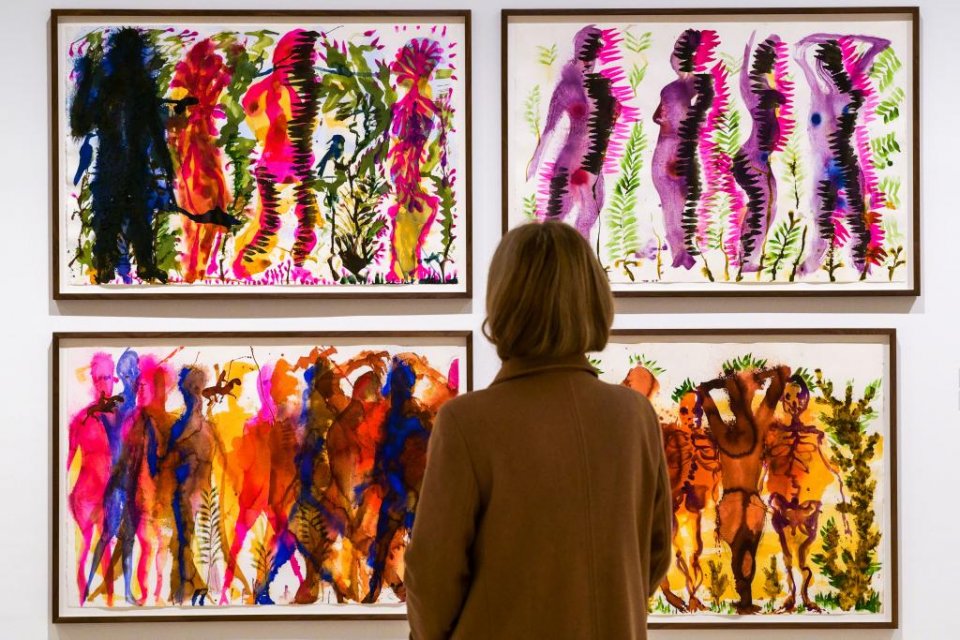We’ve all heard of the Spanish Masters – Goya, Picasso and Dalí, to name just three – but here’s a recommendation if you haven’t heard of Miquel Barceló, native of Mallorca. Book yourself a ticket to visit the Museo Picasso Málaga’s exhibition of Barceló’s mood-lifting art.
After months of lockdown, the museum, like many galleries across Spain, is open albeit with limits on capacity and social distancing restrictions. The permanent collection of Picasso paintings continues to attract visitors, but it’s this technicolour tour-de-force, exhibiting arguably Spain’s most influential living artist, that may well linger for visitors the longest.
Inspired by Franz Kafka’s 20th century novel, Metamorphosis, Barceló genuinely seems to enjoy producing art, confounding how we might experience an art exhibition. He playfully entertains us with diverse artistic forms, some towering above us, like giant matchsticks, as soon as we enter the museum’s central courtyard.

Elsewhere, we’re transported to a world worthy of Kafka’s fantastical imagination. From the beginning of this journey, Barceló draws childlike inspiration from Metamorphosis, playing with clay and bronze to see which shapes and figures he can poke, mutate and magic into shape.
The 30 ceramics on display are a wondrous early highlight. Drawing on his career interest in mythology, neolithic art and nature as a spiritual guide for his work, on the one hand you feel you’re in Alice’s Wonderland, complete with oversized plants, sprouting vases and improbable toadstools, and in the same gallery you sense the Kafkaesque influences on Barceló’s work as he celebrates the surreal and the absurd.
One particularly popular painting which had gallery goers taking selfies, is of a bullfighter disappearing into a vast vortex of swirling lines, the essence of it felt of Spanish passion, as if by viewing the painting you too were joining the torero in a dance with the bull.
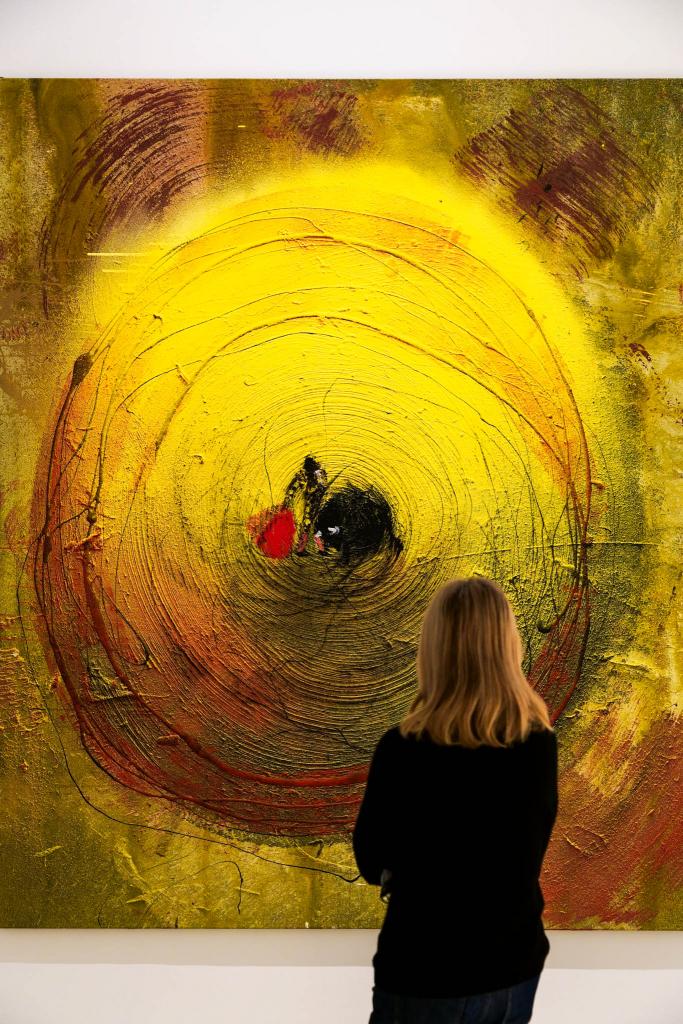
Continuing around the main galleries you begin to appreciate why the museum has sponsored this great artist. The daring qualities in Barceló – his experiments with organic material, his attempts to scratch and burn surfaces – owe something to Picasso’s spirit of reinvention.
Barceló warmly acknowledges Picasso’s lasting legacy on his oeuvre: ‘Each work is experimental. Each work is a trial run for another that will probably never exist … [Picasso’s influence] is a way of relating to life, a way of relating to the world.’
One’s rarely tempted, however, to exit the temporary exhibition and head next door to the permanent collection. Metamorphosis invites us on a trip and if you like the sea, as many of us do in Spain, you’re in for a treat.
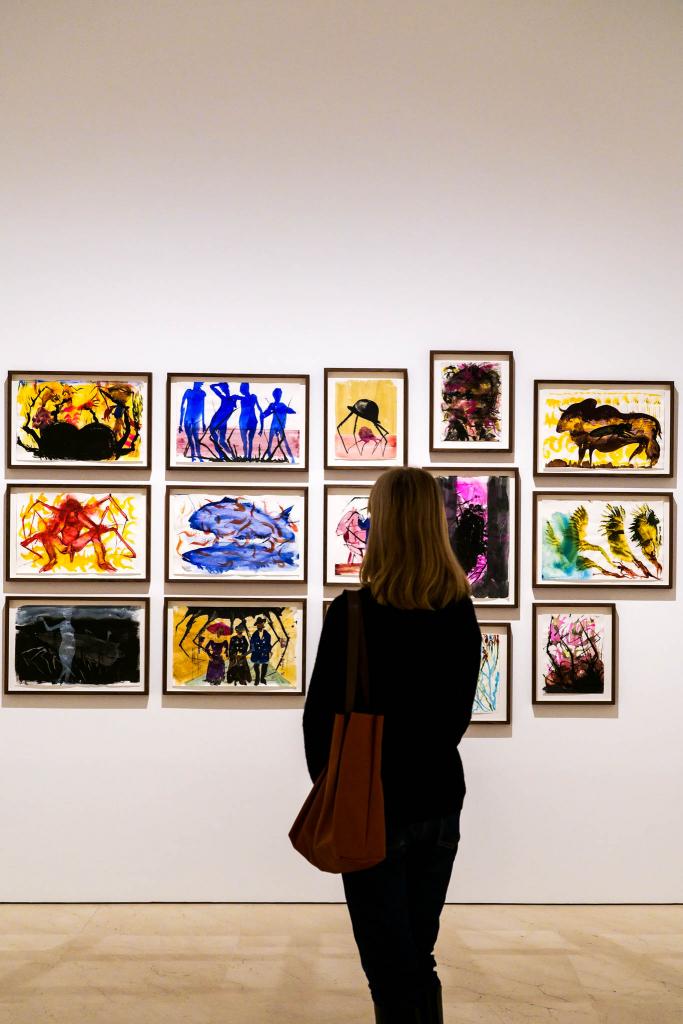
Three of his paintings in the exhibition are especially spellbinding, stopping you in your tracks as they evoke stellar night skies and the lapping waves of a deep blue sea. What fills the gallery is his love of isolated spaces.
‘He defines himself as a country boy,’ says José Lebrero Stals, the Museo Picasso Málaga’s Art Director. ‘He feels very close to earth, to nature, not necessarily to the gardens of London or a park in New York, but where light and darkness combine in an organic way, far away from the metropolis. He searches for spaces of freedom, like a poet. He’s a Mediterranean person, very closely related to the sea, to the forces of moving water.’
Like the sea, Barceló comes across in interviews as restless, the eternal nomad in fact, determined to challenge his own inner conception about what art is, plus where and how it can be created.
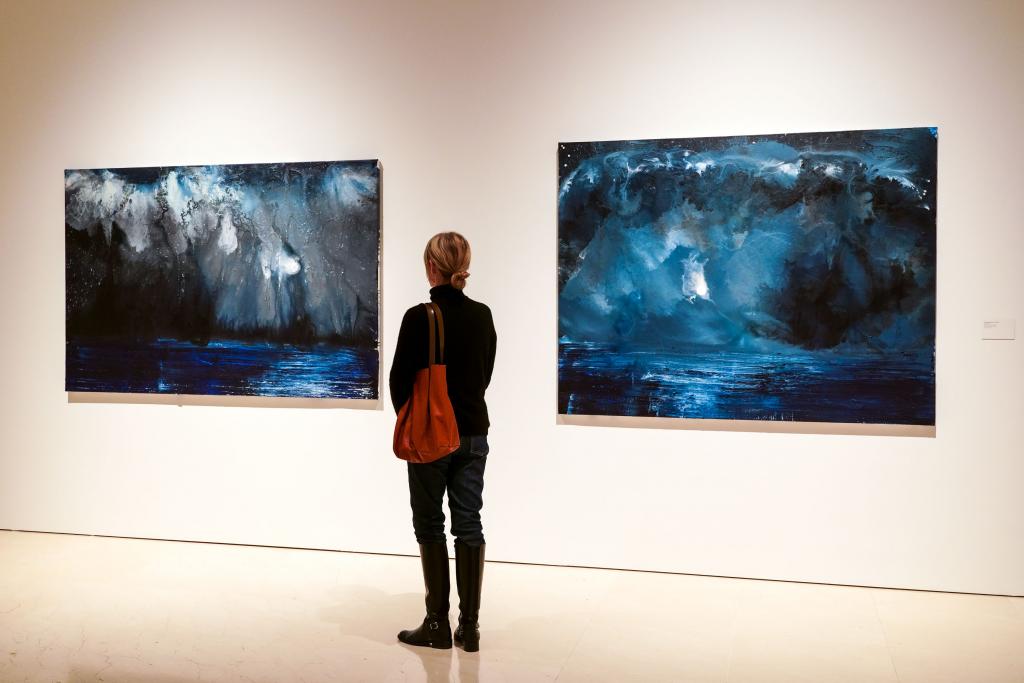
The large format seascape paintings are worthy of the entrance fee alone as they resonate with movement and extraordinary shifts in light under full moons and storm-filled clouds. On one level, they serve as a reminder of all that’s felt constant in the nature and landscapes we’ve been able to enjoy this past year, despite the enduring challenges we’ve experienced in our towns and cities.
When asked whether Barceló’s art has itself been shaped by his experience of lockdown, José Lebrero Stals says, ‘We can expect art to help us think through complex questions, but I don’t think Barceló is giving answers to anything. Artists need silences.’
Lebrero Stals continues: ‘In this last year, Barceló found himself in his natural condition, he’s been in Mali, India and Thailand, not because of the appeal of exoticism, but to be isolated and to produce his work. Even being alone gives us the chance to create our own world.’
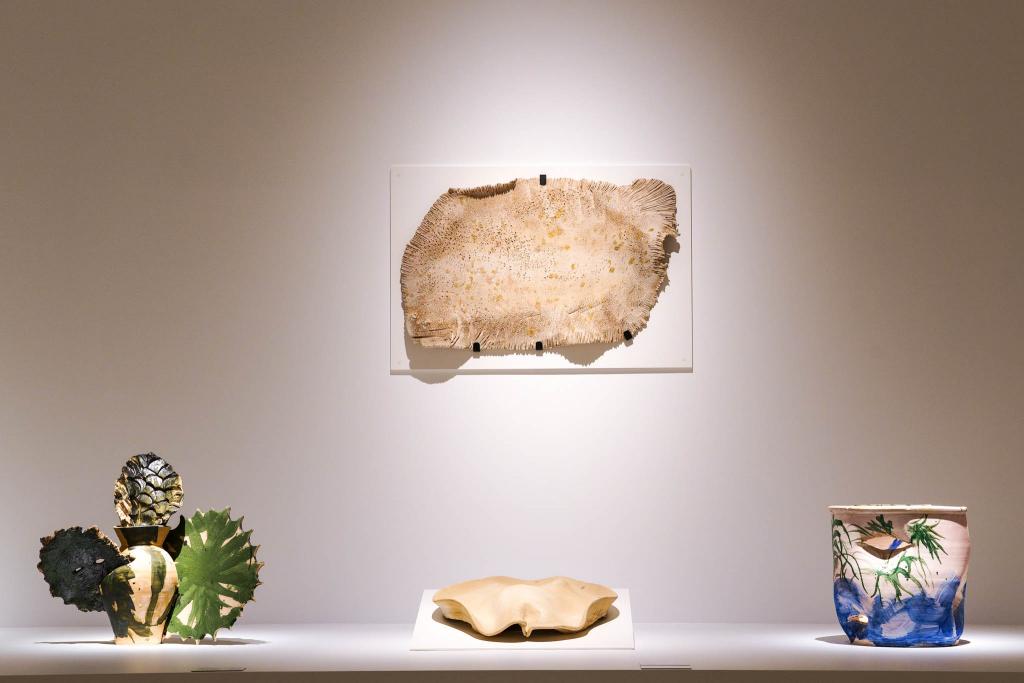
While Barceló the storyteller may have been more comfortable with the silences and isolation of the past twelve months than most, the lesson seems to be that there’s splendour and a light to what can be created in challenging times and with this new exhibition, the light shines very brightly indeed.
The light is perhaps most resplendent in his 15 gouache paintings which illustrate the story of Kafka’s character, Gregor Samsa, who metamorphoses into a human insect.
They’re not Barcelo’s most accomplished pieces of work – they’re illustrations in fact for a new version of Kafka’s novel, published by French publisher Gallimard – but they draw you in, like a child peering at the bedtime stories read to them by their parents. That’s possibly the lasting effect of the exhibition, which is by no means extensive, but which nevertheless constructs a world and allows us to roam free with our imagination.
‘In these times of pandemic, Barceló assumes an optimist’s position. He shows even isolation gives us the chance to be ourselves, to be free, to be creative,’ says Lebrero Stals. Immerse yourself and you may too come away from the Museo Picasso Málaga with renewed optimism.
Miquel Barceló’s Metamorphosis is running until September at the Museo Picasso Málaga. Click here for opening times and admission fees.
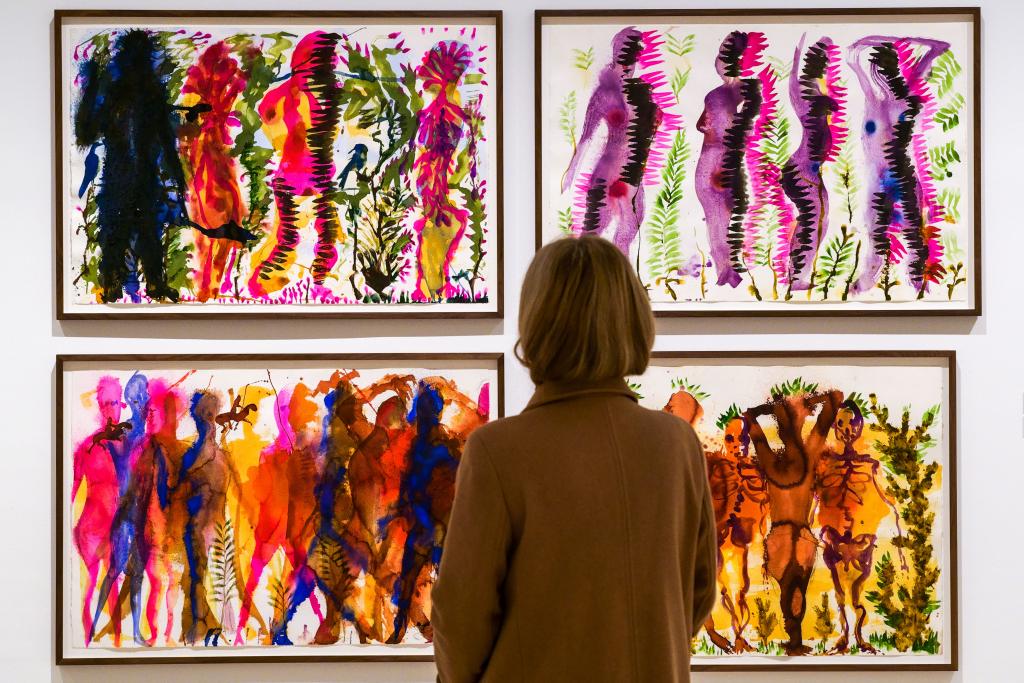
Museums are open – can they stay open?
While the Barceló exhibition has been drawing visitors from Andalusia since it opened at the beginning of the year, Covid-19 travel restrictions have meant the exhibition hasn’t been viewed by the numbers the museum would have ordinarily attracted.
José Lebrero Stals said that whatever happens over the course of the summer, museums like his are going to have to transform – quickly.
‘We need to work more on digital transformation, there are fantastic examples in the National Gallery in England. This is the future – we need to think of programmes and participation in digital, to connect with people who don’t physically come here, who may never come here, or who decide for the first time to come here.’
‘During this pandemic,’ he said, ‘museums have the potential to build communities, to rethink how we produce things. It’s exciting.’
Andrew Kaye is a freelance writer, teacher and coach. He offers coaching sessions for individuals looking for change in their professional or personal lives. He blogs at www.andrewkaufman.co.uk
Click here for previous reports on Art and Exhibitions on Spain in English.
Sign up for the FREE Weekly Newsletter from Spain in English.
Please support Spain in English with a donation.
Click here to get your business activity or services listed on our DIRECTORY.
Click here for further details on how to ADVERTISE with us.


